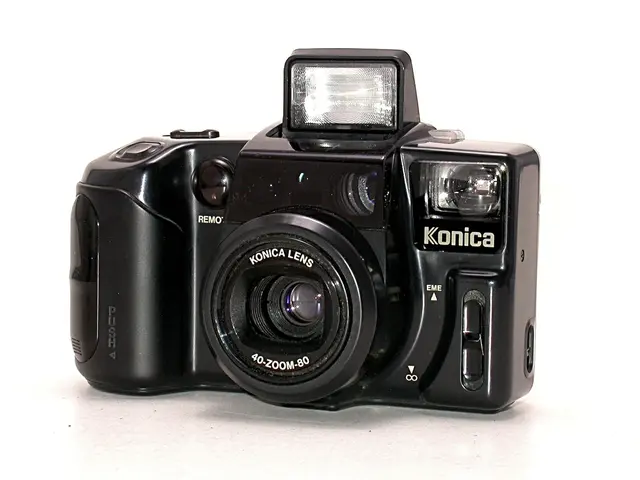Initial Impressions and In-Depth Assessment of Canon's Flagship Mirrorless Camera, the EOS R1
New and Impressive: Canon EOS R1
Dive into the world of image perfection with the groundbreaking Canon EOS R1. This powerhouse doesn't just carry Canon's "1" designation, it embodies it - featuring cutting-edge technology and top-tier performance.
To those in the photography know, "1" generally signifies a brand's top dog, brimming with features that go above and beyond. Initially scheduled for release in 2019 as an update to the Canon 1DX Mark III, the anticipation spiked after Sony revealed their flagship Sony A1. However, Canon switched gears and debuted the Canon R3, leaving some on tenterhooks for what was next. Now, Canon delivers the EOS R1, packed full of amazing advancements designed to outshine the competition.
But as Nikon stepped onto the scene with the impressive Nikon Z8 and Z9, some may ponder the delay in Canon's release. However, with its recent unveiling, it's clear that the Canon EOS R1 is here to make a splash. But the big question now is, does it sink or swim in the harsh world of underwater photography?
US MSRP: $6299
Canon EOS R1 Specifications
- 24.2 megapixel full-frame stacked back-illuminated CMOS sensor
- DIGIC X processor with DIGIC Accelerator
- 6K RAW video up to 60 frames per second
- Introducing C-Log 2 picture profile for video recording, along with C-Log3
- 40fps burst shooting RAW photos with electronic shutter, 12fps RAW photos with mechanical shutter
- Dual Pixel Intelligent autofocus
- Increased accuracy and precision cross-type autofocus
- Improved subject tracking, including a new action-priority mode
- Enhanced eye control autofocus
- -7.5 EV low light autofocus
- 1/200 flash sync speed with mechanical shutter, 1/400 flash sync with electronic shutter
- Integrated battery grip
- Blackout-free EVF (9.44 million dots)
- Dimensions: 157.6x149.5x87.3mm
- Weight: 1115 grams
EOS R1 Key Features
While many of the R1's features can be found in the recently released, higher-resolution Canon EOS R5 Mark II, there are a few standouts that matter to underwater photographers. The flexible flash sync speeds and a lower resolution sensor cater to videographers in need of the best low light performance available, as opposed to the R5 Mark II. However, the tradeoff here is a larger body that clocks in over a kilogram.
Speedy Sensor Transfers = High Flash Sync Speeds, Faster Burst Shooting
The C24 megapixel stacked sensor on the R1 boasts quick readout speeds, enabling the camera to tap out burst speeds of up to 40fps RAW photos. This speed is more than enough for most underwater photographers seeking swift action capture, particularly when shooting elusive subjects like whale sharks, dolphins, and sailfish. Despite the impressive speed offered by the R1, many photographers may opt for the R5 Mark II due to its 30fps burst shooting speed and higher 45 megapixel resolution.
Additionally, the sensor on the R1 is compatible with electronic shutter strobes. The camera is equipped with a flash sync speed of up to 1/500 of a second (1/400 with no crop) with the electronic shutter. This speed is notably higher than the mechanical shutter's 1/200 flash sync speed. As we learned from our Sony a9 III review, high flash sync speeds allow you to micromanage ambient light in your shots - perfect for crafting a backdrop of pure black behind your subject during midday shoots.
The combined effect of these features equates to shooting 40fps with the mechanical shutter at a shutter speed of 1/400 of a second. While high-power strobes would struggle to keep up with this rapid pace, mid-power options like the Sea & Sea YS-D3, Marelux Apollo III, and Ikelite DS232s should have no difficulty.
The Best Autofocus System on the Market
Both the Canon R5 Mark II and the Canon EOS R1 made their debut with an updated autofocus system. This new system includes eye control autofocus, a novel feature from the Canon R3 that likely won't be useful in underwater settings. However, the trailblazing autofocus system boasts subject tracking that excels in all environments - greatly benefiting underwater photographers. The DIGIC Accelerator integrated into the system further improves upon Canon's already grade-A autofocus system.
Innovative Video Features
The Canon R1 could be a more desirable camera for underwater videographers than the R5 Mark II. The lower resolution sensor is expected to yield slightly superior low-light performance. An integrated battery grip also promises longer battery life for recording, which could potentially minimize overheating issues.
On top of that, the R1 can record 6K video up to 60 frames per second, with options for both RAW video and its new C-Log2 and C-Log3 profiles. The higher resolution will allow macro shooters to crop their footage for additional b-roll, and the higher frame rate allows for increased stability during filming.
A Spacious Body
One potential downside of the Canon R1 is its generous size and weight, which surpasses the one-kilogram mark. Despite this powerhouse's robustness, it comes with the consequence of requiring larger underwater housings, which are less travel-friendly and heavier in water. Given that battery life is generally decent on the R5 Mark II, there's not much reason to bring the R1's integrated battery grip underwater at the expense of compactness. Considering the R1's impressive fast flash sync speeds with electronic shutters, it might be worth exploring the Sony a9 III, which does not sport an integrated battery grip.
Canon EOS R1 Underwater Housings
Due to the need for extra space to accommodate the R1's battery grip, we anticipate limited housing manufacturers for the Canon R1. Notable anodized aluminum housings are expected from Nauticam, Marelux, and Aquatica, with a housing from Ikelite not yet confirmed.
Final Thoughts
Ultimately, the Canon EOS R1 may not live up to the hype that preceded its release. While it's unquestionably one of the best underwater cameras available, it fell short of our expectations as the long-awaited upgrade to Canon's flagship model. Despite its impressive performance, it fails to surpass the competition in terms of overall value and features, making the Canon EOS R1 a tough sell at its $6299 price tag. Don't get us wrong; it's an excellent camera, but the Canon R5 Mark II offers a better selection of features and performance for underwater photographers and videographers - all for $2K less.
- The Canon EOS R1, with its stacked back-illuminated CMOS sensor and DIGIC X processor, ushers in a new era of underwater photography, showcasing Canon's commitment to innovation.
- Underwater photographers will appreciate the R1's 6K RAW video capabilities up to 60 frames per second, a feature that allows for capturing swift subjects like sharks and dolphins with remarkable speed.
- The R1's cutting-edge autofocus system, complete with improved subject tracking and eye control autofocus, ensures crisp and precise focus underwater.
- With a flexible flash sync speed of up to 1/400 of a second, the R1 allows for fine-tuning ambient light in pictures, a valuable feature for capturing stunning underwater shots during midday hours.
- Despite its impressive specifications, the Canon EOS R1 faces stiff competition from the R5 Mark II, which offers a slightly higher resolution and comparable burst shooting speeds at a lower price tag.
- Expect housing compatibility for the Canon R1 from manufacturers like Nauticam, Marelux, and Aquatica, though options may be limited compared to other models due to its larger size.
- Ultimately, while the Canon EOS R1 boasts top-notch performance, its high price of $6299 and bulkier design might deter some photographers, making the Canon R5 Mark II a more attractive option for many underwater photography enthusiasts.








